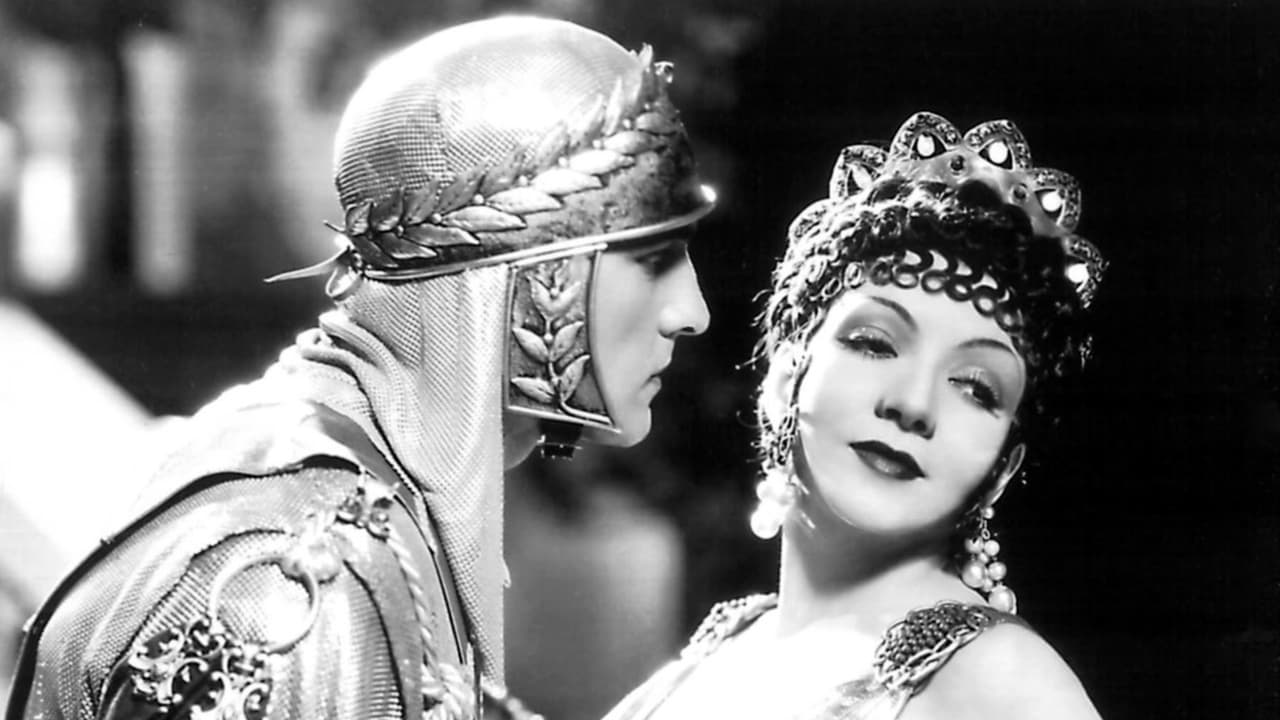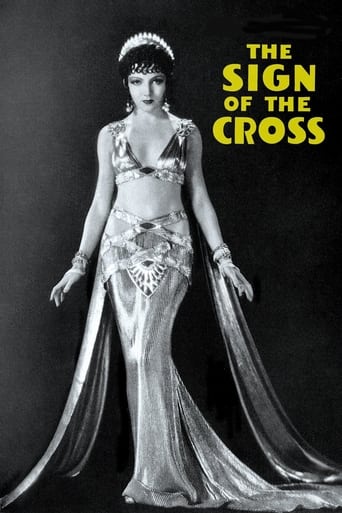

The Sign of the CrossThe "Sign of the Cross" is a Hollywood film made in 1932. Fredric March plays Marcus Superbus, possibly the prefect of the Praetorian Guard, who falls in love with Mercia (Elissa Landi) a Christian. At the end, they go to their deaths together in the Colosseum. Claudette Colbert plays the empress Poppea. Nero is played by Charles Laughton. It's a fairly spectacular film. There is an orgy at which Marcus tries and fails to seduce Mercia away from Christianity and into sin. Then there is the games in the Colosseum that end with the Christians being fed to the lions. Near the beginning there is the famous scene of Poppea bathing in milk; you may or may not get see a little more, a very little more, than was normal in Hollywood films of the time. The weakness is in the characterisations. When Marcus and Mercia first meet there is absolutely no chemistry between them and it is absent throughout the film. March is too lightweight for a senior Roman officer. He is neither Russell Crowe nor Stephen Boyd. Colbert's Poppea is no more evil than Amanda Barrie's Cleopatra. Colbert's Poppea comes across as being flirtatious and rather vacuous, but far more seductive than the Mercia of Elissa Landi. Although Nero was mad, I always imagined him to be far more dynamic than Laughton's version.
... View MoreThis is an interesting movie. The similarities with Quo Vadis are striking and the ultimate provenance of the script may owe something to that other book/movie. I find it interesting to see how two movies made at different times deal with similar material. TSOTC has the piquant tang of Hollywood pre-code, with over-the-top depictions of Roman depravity. QV has a wild-party scene but nothing like that. QV has the technicolor look and feel of Ben Hur and basically conforms to standards of conduct which would not be challenging in America after the Second World War. Robert Taylor and Fredric March play parallel roles of the Roman aristocrat in love with a Christian woman. March was a much better actor than Robert Taylor, who was at times wooden (not exactly Richard Burton in The Robe). Taylor was a great deal older when he played this role and he seems kind of a strange choice for the "love interest" opposite Deborah Kerr. March was young and his performance was not as nuanced as what would evolve in A Star is Born and The Best Years of Our Lives, but he is still extremely good to watch; he never throws away a line. The sadism of the TSOTC colosseum scene beats anything in QV; the most interesting aspect is the expressions on the faces of the crowd. Ustinov versus Laughton as Nero is instructive. U. must have known L's performance and riffed on it; there do seem to be correspondences, but U's performance is more nuanced. TSOC seems to suffer all around from the newness of the talkie medium; the acting seems out of silent films with much wordless gazing, either love- struck or in horror. Elissa Landi's articulate Christian conviction may owe something to the first-generation of mass-media evangelicals (e.g. Amy Semple McPherson) who were making a big splash then. All in all, TSOTC is fine specimen of the toga picture.
... View MoreThis Cecil B DeMille film supposedly shocked 1932 audiences & seemingly shocked some reviewers on this list.Seeing this today,I find it dated beyond belief in every aspect. In fact in many scenes I was chuckling at the antics of the various players.This tale takes place in 64 AD,(burning of Rome & persecution of Christians), It has the same basic story that QUO VADIS has BUT any version of QUO VADIS is far superior than this.I more than likely will see Qup Vadis again (will be about my tenth viewing) & comment then on it.The Sign of the Cross does have an all star cast of the time, Fredric March is our staunch hero, A prefect of Rome, Who has both Epmress Poppea & a Christian lass after him,he does well in the role--he was a fine actor.Claudette Colbert is the evil scheming Empress Poppea, evil to the core. Charles Laughton is Nero,hamming it up ALL the way. Elissa Landi ,is the Christian lass. Miss Landi was no actress & soon disappeared from the screen. She was pretty though.The last 20 minutes takes place in the Colisseum & we have one heck of a show,The special effects department had a field day here. These scenes may have been shocking in the 1930's, BUT today we can see how phony they really are.The entire film was well made,but is not really for todays audiences.Ratings: **1/2 (out of 4) 70 points (out of 100) IMDb 6 (out of 10)
... View MoreSign of the Cross, The (1932) ** 1/2 (out of 4) Third chapter in Cecil B. DeMille's religious trilogy. Nero (Charles Laughton) sets fire to the city of Rome and blames the Christians so that they can all be murdered. Nero's number one man (Fredric March) falls in love with one of these Christian girls (Elissa Landi) and must chose sides. Like many DeMille films, this one here looks and sounds great but the smell is rather sour. This is the type of film that begs you to love it and gives you a lot of things to love but when you take a closer look it's rather poorly made. The biggest problem is that there's no emotion throughout the film and the religious aspect is glossed over, which is a shame since it was so wonderfully handled in King of Kings. The love story between March and Landi never really materializes either. Laughton, March and Claudette Colbert all give very good performances but the real star is Landi. Colbert's sexual milk bath is certainly a highlight. The massacre of the Christians at the end, while trying to be shocking, never really packs the punch of other films including Intolerance. Previously made in 1914.
... View More